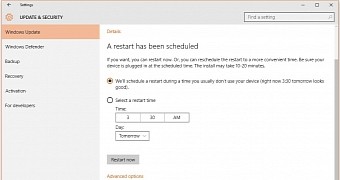If you’re an early Windows 10 adopter, you surely know that since July 29, Microsoft has released several cumulative updates for the new operating system, as part of a new approach that’s supposed to always keep computers up-to-date at any given moment.
Basically, cumulative updates include all the previously-released patches for the platform, so if you install the last one, you pretty much get everything Microsoft has launched until that very moment. But what happens if one of the fixes included in the full update is broken?
“The result you get is better”
Microsoft’s Joe Belfiore says this shouldn’t be the case because they have conducted internal tests and talked to several companies and organizations to determine the better approach for Windows 10. And cumulative updates are by far the preferred choice for everyone, although he still hasn’t explained what happens in the case of updates that are causing trouble on Windows 10 PCs.
“We've involved a lot of companies and real-world IT management organizations in talking through the implications ... and our feeling talking with them is that the net result that you get is better,” he was quoted as saying in an interview by CW.
“We've seen lots of examples of situations where end users experienced lower reliability or unpredictable system performance because of a relatively untested combination of updates. So our net intent is to improve the quality overall, for everybody. And we believe that this method will deliver that.”
While relying on cumulative updates might be good for the company because it reduces fragmentation and indeed prevents some issues that might be caused by some updates installed on top of others, it certainly leads to problems that are impossible to fix by users unless they remove the full patch.
And what’s worse, this is already happening because some of the cumulative updates released so far failed to install (read more about update KB3093266, KB3081424, and KB3081436 – and these are just 3 examples), so it’s pretty clear that this strategy isn’t working for everyone.
And last but not least, the problem with the lack of release notes still remains: users have no idea what they’re installing when a cumulative update is offered, so blocking a specific patch that might be causing trouble on their computes is pretty much impossible.

 14 DAY TRIAL //
14 DAY TRIAL //